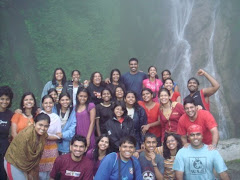Most of us have been brought up to believe that human waste is disgusting and offensive and best flushed out of sight. But not if you are a Ladakhi, born and brought up in the cold desert regions of the Himalayan mountains. Here, human excreta is an important source of manure for the fields. The land here is not fertile, but the Ladakhis have made it so, over many generations, with their many ingenious methods. For one, water is brought to the fields (sometimes over several kilometres) by a very elaborate network of yura or canals that traverse the barren landscape. Water from melting snow from the upper parts of the mountains reaches many villages only by the evening. This is stored in a `zing', a man-made storage pond. But water alone cannot do the trick. The soil has to yield and for that it has to be made fertile. This problem has largely been addressed by the traditional system of dry toilets. Almost all over Ladakh, the toilet is a hole in the floor of a room that is well above the ground. The human waste falls into a sealed room below, where it is allowed to decompose over time. The manure that forms is usually cleared out once a year and spread out on the fields. The Ladakhi system of toilets is dry as no water is used. Instead, a shovel full of earth is thrown in after use. Occasionally ash is also used. This keeps the toilet odour-free. This system, which has been in use for many years, has provided the Ladakhi farmer manure for free. And has saved a resource that is very precious in that desert region: water. The Ladakhi system of dry toilets does make for good earth!!
THE HINDU- SUJATHA PADMANABHAN in collaboration with Kalpavriksh/National Biodiversity Strategy and Action Plan.
Thursday, 7 June 2007
Subscribe to:
Post Comments (Atom)

No comments:
Post a Comment